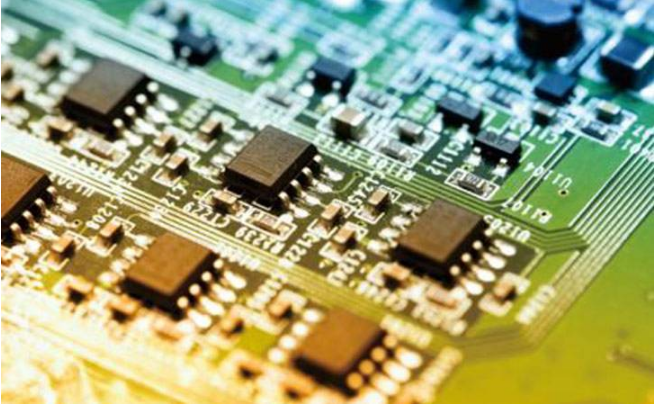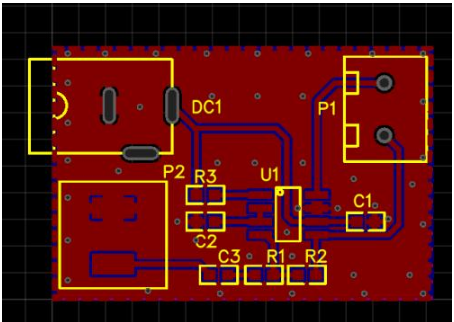
Now the integration of PCB components is getting higher and higher, while the volume is getting smaller and smaller, and BGA type packaging is widely used. Therefore, PCB lines will become smaller and smaller, with more and more layers. To reduce the line width and line spacing is to use the limited area as much as possible, and to increase the number of layers is to use space. The mainstream of the circuit board in the future is 2-3 mil or less.
It is generally believed that every time the production of circuit boards increases or rises to a higher level, it must be invested once, and the investment capital is relatively large. In other words, high-end PCB is produced by high-end equipment. However, not every enterprise can afford the large-scale investment, and it will take a lot of time and money to conduct tests and collect process data after the investment. For example, it seems a better method to conduct experiments and trial production according to the current situation of the enterprise, and then decide whether to invest according to the actual situation and market conditions. This paper describes in detail the limit of the width of thin lines that can be produced under the condition of ordinary equipment, as well as the conditions and methods for the production of thin lines.

The general production process can be divided into cover hole etching method and pattern electroplating method, both of which have advantages and disadvantages. The circuit obtained by acid etching method is very uniform, which is conducive to impedance control and less environmental pollution. However, if there is a hole, it will be scrapped; Alkali corrosion production control is relatively easy, but the line is uneven and the environment is polluted.
First of all, dry films are the most important thing to make PCB circuits. Different dry films have different resolutions, but generally the line width and line spacing of 2mil/2mil can be displayed after exposure. The resolution of ordinary exposure machines can reach 2mil. Generally, the line width and line spacing within this range will not cause problems. For the nozzle of the developer with a line width of 4 mil/4 mil or above, the pressure and the concentration of the solution are not closely related. For the nozzle with a line width of 3 mil/3 mil or below, the nozzle is the key to affect the resolution. Generally, the fan nozzle is used, and the pressure is about 3 BAR before development.
Although the exposure energy has a great impact on the circuit, the exposure range of most dry films currently used in the market is quite wide. It can be distinguished at 12 to 18 levels (25 level exposure ruler) or 7 to 9 levels (21 level exposure ruler). Generally speaking, low exposure energy is beneficial to the resolution, but when the energy is too low, dust and sundries in the air will have a great impact on it, which will cause open circuit (acid etching) or short circuit (alkali etching) in the subsequent process. Therefore, the actual production should be combined with the cleanliness of the darkroom, so as to select the minimum line width and line spacing of the circuit board that can be produced according to the actual situation.
The influence of development conditions on resolution is more obvious when the circuit is smaller. When the line is above 4.0mil/4.0mil, the development conditions (speed, liquid concentration, pressure, etc.) have no obvious influence; When the line is 2.0mil/2.0/mil, the shape and pressure of the nozzle play a key role in the normal development of the line. At this time, the development speed may be significantly reduced, and the concentration of the liquid medicine has an impact on the appearance of the line. The possible reason is that the pressure of the fan-shaped nozzle is large, and the impulse can still reach the bottom of the dry film when the line spacing is very small, so it can be developed; The pressure of conical nozzle is small, so it is difficult to develop thin lines. In addition, the direction of plate placement has a significant impact on the resolution and dry film sidewall.
Different exposure machines have different resolutions. At present, one type of exposure machine is air-cooled, surface light source, and the other is water-cooled, point light source. The nominal resolution is 4 mil. However, the experiment shows that 3.0mil/3.0mil can be achieved without special adjustment or operation; It can even reach 0.2mil/0.2/mil; 1.5 mil/1.5 mil can also be distinguished when the energy is reduced, but the operation should be careful at this time, and the impact of dust and debris is great. In addition, there is no obvious difference between the resolution of Mylar face and glass face in the experiment.
For alkaline corrosion, there is always a mushroom effect after electroplating, which is generally only an obvious and not obvious distinction. If the line is larger than 4.0mil/4.0mil, the mushroom effect is small.
When the line is 2.0 mil/2.0 mil, the impact is very large. The dry film is trapped in the mushroom shape due to the lead tin overflow during electroplating, which makes it very difficult to remove the film. The solutions are:; 1. Use pulse electroplating to make the coating even; 2. Use a thicker dry film. The general dry film is 35-38 microns. The thicker dry film is 50-55 microns. The cost is higher. This kind of dry film has a better effect in acid etching; 3. Electroplate with low current. But these methods are not thorough. In fact, it is difficult to have a very complete method.
Because of the mushroom effect, the film removal of thin lines is very troublesome. Since the corrosion of sodium hydroxide to lead and tin is very obvious at 2.0mil/2.0mil, it can be solved by thickening the lead and tin and reducing the concentration of sodium hydroxide during electroplating.
During alkali etching, different line widths have different speeds, and different line shapes have different speeds. If there is no special requirement for the thickness of the lines to be made on the circuit board, the circuit board with a thickness of 0.25oz copper foil shall be used to make the circuit board, or a part of the 0.5oz base copper shall be etched. The thinner copper plating, the thicker lead tin, etc. are all useful for making thin lines with alkali etching. In addition, the nozzle shall be fan-shaped. Generally, the conical nozzle can only reach 4.0mil/4.0mil.
The same as alkali etching in acid etching is that the line width and line shape speed are different, but in general, the dry film is easy to break or scratch the mask film and the surface film in the transmission and previous processes when using acid etching. Therefore, care should be taken during production. The effect of acid etching is better than that of alkali etching, and there is no mushroom effect. The side etching is less than that of alkali etching. In addition, the effect of fan nozzle is obviously better than that of conical nozzle. The change of PCB impedance of the line after etching is small.
In the PCB production process, the speed and temperature of film pasting, the cleanliness of the board surface, and the cleanliness of the diazo sheet have a great impact on the qualification rate, especially on the parameters of acid etching film pasting and the flatness of the board surface; For alkali corrosion, the cleanliness of exposure is very important.
Therefore, it is believed that the ordinary PCB equipment can produce 3.0mil/3.0mil (film line width and spacing) boards without special adjustment; However, the qualification rate is affected by the environment, the proficiency of personnel and the level of operation. Alkali corrosion is suitable for the production of circuit boards below 3.0mil/3.0mil. Unless the base copper is small to a certain extent, the effect of fan-shaped nozzle is obviously better than that of conical nozzle.









